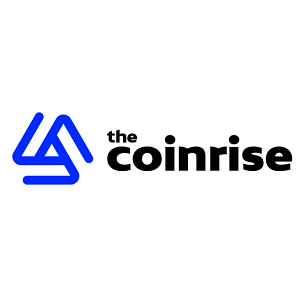U.S.-Based Stablecoins Surge 104% in a Year, Signaling Shift in Global Market Dynamics
4 min read
The global stablecoin market is experiencing a clear shift as U.S.-based stablecoins grow swiftly, powered mainly by the now-clear regulatory landscape and a surge of interest from institutions. In just the last three months, the supply of stablecoins issued by American companies—such as USD Coin (USDC) and PayPal USD (PYUSD)—has more than doubled, up 104 percent, to reach a total market value of $67.5 billion. Offshore stablecoins still dominate, but U.S. growth is accelerating Over the past year, U.S.-based stablecoins like $USDC and $PYUSD have more than doubled in supply, growing +104% to $67.5B. Meanwhile, non-U.S. stablecoins, led by $USDT , $USDe , $DAI , and $USDS , showed more… pic.twitter.com/GGLHim43CA — CryptoRank.io (@CryptoRank_io) June 12, 2025 This growth is in contrast with the moderate expansion seen among offshore jurisdiction stablecoins, which include the long-standing leaders Tether (USDT), Ethena’s USDe, MakerDAO’s DAI, and Stably’s USDS. These offshore stablecoins grew by 41 percent over the same period—still remarkable, but clearly not on par with the pace of growth seen among U.S. stablecoins. The numbers show a change in market dynamics. For most of the past decade, the stablecoin sector was dominated by non-U.S. issuers, who operated under very little regulatory oversight. But the past year has seen a recalibration of sorts, as U.S. issuers have found their footing and confidence in the rapidly evolving legal and compliance landscape. Regulatory Clarity and Institutional Confidence Drive U.S. Growth The recent surge in stablecoins based in the U.S. is closely linked to the growing clarity of the regulatory approach to digital assets. What is becoming clearer is that U.S. financial regulators expect firms to register with them and follow the rules. Lawmakers have also signaled that new legislation could be on the way to provide more guidance and cover for firms that seek to operate in the digital asset space. USDC from Circle has become a go-to option for organizations, fintechs, and DeFi apps that want a digital dollar that’s overseen and operates in a clear, trustworthy manner. Meanwhile, it’s important to note that PayPal’s own stablecoin—PYUSD—has managed to crank the dial up even further in terms of mainstream visibility and accessibility. A retail user can now also satisfy their on-chain dollar desire via PayPal. This trend is significant because it is happening at a time when stablecoins are assuming a greater role in the global payments landscape. From crypto exchanges to decentralized applications, having access to reliable, compliant, dollar-pegged assets is actually kind of crucial. And within this context, the digital asset space is exhibiting a pronounced preference for U.S.-based stablecoin issuers. These are deemed more secure and more regulated (even if the jury is still out on the overall regulatory framework). These stablecoins have seen a substantial increase in the pace of their supply growth. This not only shows us that more and more people are converting fiat into tokenized dollars, but also that these dollars are being actively used in DeFi applications. A large portion of this is likely being used in cross-border payments, which we know is one of the major use cases for stablecoins. Trading platforms are also a big part of this, as evidenced by the recent conversations around stablecoin market making. Offshore Stablecoins Still Lead, But the Gap Is Narrowing Even with the recent increase in stablecoins from the U.S., the global market is still largely in the hands of stablecoins from outside the U.S. Tether (USDT), which is mostly an outside-the-U.S. operation, still is the largest stablecoin by market cap and also by daily trading volume. It’s available on just about every exchange you can think of and is a go-to choice for a lot of users because of that and also because of its cross-border applications. Especially in emerging markets, USDT is a default choice. DAI and algorithmic models like USDe represent decentralized alternatives that give users opportunities to prioritize decentralization or sidestep regulatory scrutiny. Stablecoins issued from offshore jurisdictions, when taken in aggregate, represent the lion’s share of the total global supply of stablecoins. The gap is closing, though. Stablecoins based in the U.S. are growing at more than double the rate of their offshore counterparts. Market share is likely to shift further in the coming years. And if this trend continues, stablecoins issued in the U.S. could, in some sense, be as big as Tether. Slipping in market share as we go forward, Tether could become, in some context, a non-factor. How digital assets are regulated is an evolving story in the United States. This includes legislation around stablecoin reserves, that they should be backed by a currency, a commodity, or some combination thereof. The regulators want to know if the reserves are there when we say they are, and if the tokens are being issued in a way that is safe and sound. If we get to a place that is described in a way such that we think it is secure, then we think more capital could flow into U.S.-issued stablecoins. Although the U.S. may lag in the issuance of stablecoins, the U.S. stablecoin market is rapidly growing, and American stablecoins could play a significant role in the next phase of the digital currency ecosystem. Clearer regulation, stronger institutional demand, and surging adoption are propelling U.S. stablecoins to potential leadership in the next phase of the digital currency evolution. Non-U.S. stablecoins are in the lead today, but U.S. stablecoins are potentially next. Disclosure: This is not trading or investment advice. Always do your research before buying any cryptocurrency or investing in any services. Follow us on Twitter @nulltxnews to stay updated with the latest Crypto, NFT, AI, Cybersecurity, Distributed Computing, and Metaverse news ! Image(s): Shutterstock.com

Source: NullTx



